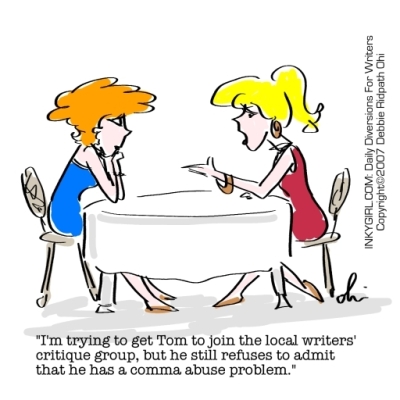Commas
Learning Goal: Understand the proper uses of the comma. Identify areas of weakness and how to improve comma usage in own writing.
Proper Uses of the Comma and Common Abuses
Read through the following information:
Owl Purdue Explains the Proper Uses of the Elusive Comma - Click here!
Most people tend to use commas in the same way and don't deviate. In fact, there is a common misconception that a comma just represents a "break" and can be used willy-nilly any time a writer feels like it. Not quite. Reflect on what ways you use commas (from Owl's list). What comma rut have you been stuck in?
Practice, in your next writing assignment, email, or writing task, using them in more than one way by identifying one or two from Owl's list that you didn't know about already - making a conscious effort to use commas to build intentional flow in your writing.
Read through the following information:
Owl Purdue Explains the Proper Uses of the Elusive Comma - Click here!
Most people tend to use commas in the same way and don't deviate. In fact, there is a common misconception that a comma just represents a "break" and can be used willy-nilly any time a writer feels like it. Not quite. Reflect on what ways you use commas (from Owl's list). What comma rut have you been stuck in?
Practice, in your next writing assignment, email, or writing task, using them in more than one way by identifying one or two from Owl's list that you didn't know about already - making a conscious effort to use commas to build intentional flow in your writing.
Activity: Fixing Comma Abuses (for in-class students only)
After reviewing the proper uses of the comma and comma abuses on the Owl Purdue Website, in assigned group, write three sentences that “abuse” commas.
When done, you will swap your sentences with another group and identify and fix the errors.
After reviewing the proper uses of the comma and comma abuses on the Owl Purdue Website, in assigned group, write three sentences that “abuse” commas.
When done, you will swap your sentences with another group and identify and fix the errors.
Sources:
Image: "Regurgitating Grammar Sites « Happy Typing by Deb Diez." Happy Typing by Deb Diez. N.p., n.d. Web. 23 Apr. 2012. <http://debdiez.wordpress.com/2012/01/18/regurgitating-grammar-sites/>.
Image: "Regurgitating Grammar Sites « Happy Typing by Deb Diez." Happy Typing by Deb Diez. N.p., n.d. Web. 23 Apr. 2012. <http://debdiez.wordpress.com/2012/01/18/regurgitating-grammar-sites/>.

